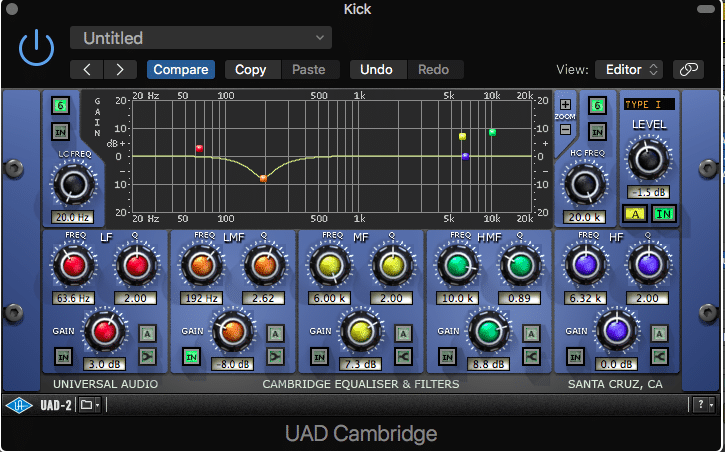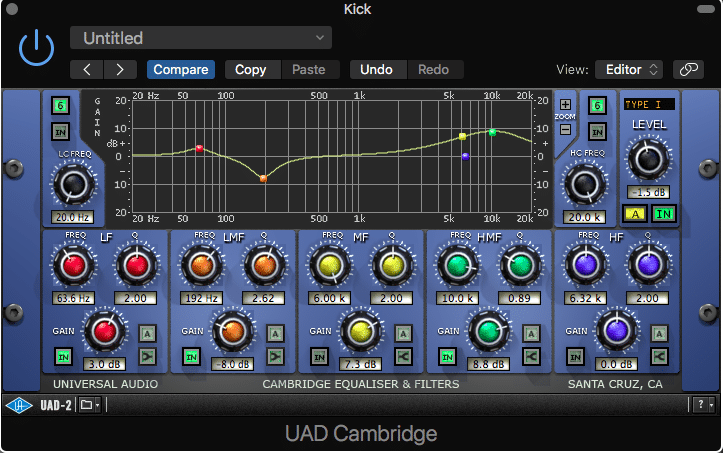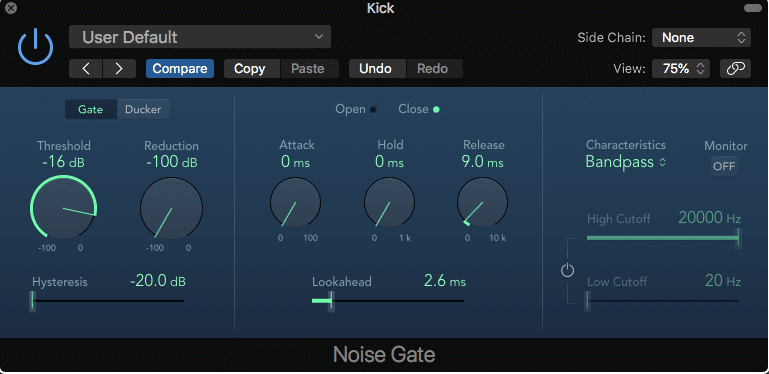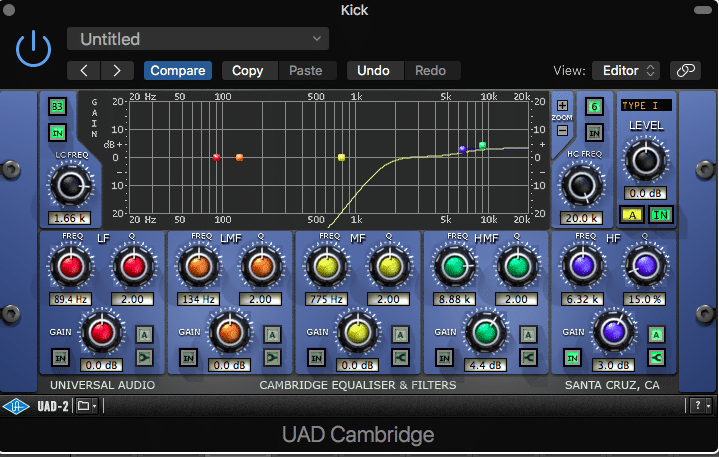(I highly recommend you check out my initial kick drum processing post. This covers phase and contextual mix issues which may affect the sound of your kick drum within the mix.)
Now it’s time to look at the kick drum itself. Fundamentally every kick drum will sound different from one another. However, there are some very common EQ curves that tend to work well when Eqing a close mic kicks.
Cut before boost
Some kick drum sounds will be already well balanced and sound great. However, within a mix, it is often the case that equalising the kick will help significantly for the mix as a whole.
Fortunately, kick drums are one of the sounds in a mix that can ‘take’ heavy equalisation without sounding too unnatural. (Unlike, for example, pianos, synths, and guitars.)
Before we look at sample replacement, we should always make the original kick-drum channel sound as good as possible.
To do this, the first thing to consider is whether a kick drum sound requires reductive equalisation. If you can hear ‘boxy’ and ‘narrow’ frequencies within the kick, then it’s time to isolate them and remove them.
One way to do this is to boost the frequencies where you believe there is a problem. Then sweep through the frequencies to help you find the problematic area. At this point, you can reduce the frequency to taste.
Take a listen to the examples below:
Without any boosts, you can hear a significant improvement in the sound of the kick drum by removing these problematic frequencies.

BOOSTING
Boosting EQ in a kick drum
Once we’ve removed the problems, it’s time to look at boosting frequencies to add ‘depth’ and/or ‘clarity’ of the kick drum sound.
Often, boosting low frequencies, complemented by a high-frequency boost, can revolutionize the sound of your kick drum. Not only will the kick sound better itself, but it will also help it cut through the mix and also ‘depth’ and ‘punch’ because of the low frequency boosts.
One important thing to note is that the high-frequency boosting will give you a kick additional perceived volume within the mix. This means that the level of the kick drum will not have to be as loud as it would be otherwise.
Let’s take a listen to the kick with additional boosts difference it can make:
As you can hear it’s huge!

Use A Fast Gate In Parallel to add Click and Clarity.
Another useful trick you can utilise is to double-up the original kick sound and use a gate with a very fast release time. The very fast release time removes any cymbal bleed from the signal meaning you can place extreme boosts in the high-frequency of the kick without the cymbals interfering with the sound of your kick drum.
You can then use this additional channel to add ‘click’ and ‘clarity’ to your kick sound without any excessive cymbal sound coming through.


Using all these techniques together let’s take a listen to the before and after:
So before we’ve even considered sample replacement we have managed to make the original kick drum sound significantly better.
Even with all in place, most especially in rock metal and pop, sample replacement can be necessary. This is what we will look at in our next post.
1 thought on “How To EQ A Kick Drum For Rock And Metal”
Comments are closed.